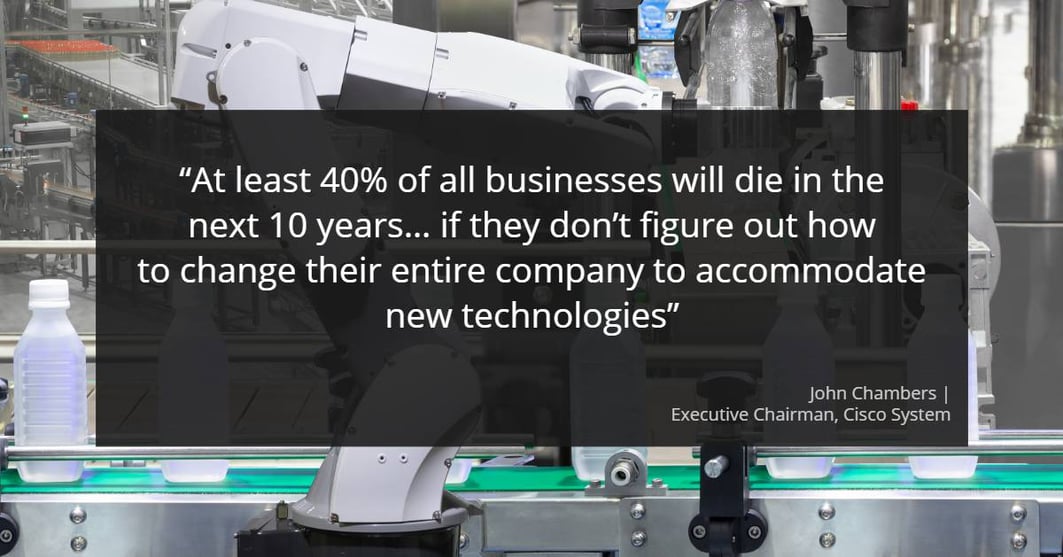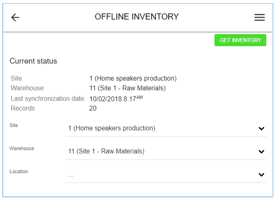.jpg?width=693&height=456&name=Digital%20transformation%20(4).jpg)
3D printing is changing things in many industries including Manufacturing and Natural Resources. It is a game changer in spare parts production. 3D printing is revolutionizing the manufacture, storage, and shipping of spare parts and hence solving many problems for Asset Intensive industries that has machinery/equipment that needs to be maintained. With 3D technology, manufacturers and producers will not have to rely on external spare part manufacturers suppliers. The technology comes with ease of production that even amateurs can implement. However, even if a manufacturer of a product chooses to work with an external spare parts supplier, the process will be more seamless and timely. No delays that cause losses. By 2022, 85% of spare parts suppliers will embrace 3D printing.

3D technology can save companies money as the production of spare parts can be done on-site. For example, a company can have a space for the 3D printers within the company hence save on transportation costs and cut on the cost of expediting. On-site production costs less money than overseas production of spare parts if you take into consideration transportation, urgency and delays. Companies can circumvent suppliers to manufacture their spare parts on their own using 3D printing technology.
Additionally, the goal of 3D printing is to produce on-demand spare parts as opposed to producing and storing the parts. This saves companies a lot of money since they can only order spare parts when they need them in the exact quantity they need, therefore no money will be spent in storage. Also, no expenses will be incurred to replace spare parts exposed to tear and wear in the warehouses.
Industries that have embraced 3D printing of spare parts
The aviation industry among the pioneer industries to adopt 3D printing technology for its spare parts. Aircraft and engine manufacturers are investing in 3D printing to reap its numerous benefits. The automotive industry has not been left behind too. Famous car manufacturers Mercedes-Benz and BMW are leading the way in embracing 3D printing.
BMW, for example, has set up a 3D metal printing startup while Mercedes Benz lets customers' print 3D spare parts for their freight trucks. The rail industry is also investing in 3D printing of spare parts with Deutsche Bahn and Siemens pursuing the technology.Siemens reports that the ability to print spare parts when it needs them has reduced costs and decreased dependency on suppliers to manufacture parts.
Advancement in the 3D printing technology to produce spare parts has seen many partnerships being formed to this effect. For instance, Whirlpool, an American home appliance manufacturer has teamed up with Spare Parts 3D, a Singapore firm to produce spare parts for Whirlpool. Among the most significant outcomes of the partnership is cost savings. Whirlpool will not incur inventory expenses by storing high quantities of spare parts. Once a part is broken or lost, Spare Parts 3D manufactures a replacement promptly.
Problems facing manufacturers and how 3D printing solves them
The process of making, storing, and shipping spare parts is time-consuming and very expensive for both suppliers and customers. The good news is that 3D printing solves many of these problems and has positive outcomes for optimized inventory, decreased costs, and increased efficiency.
1. Material waste
Material waste is among the areas that are milking product manufacturers dry. When using subtractive manufacturing techniques such as milling, so much material is wasted. A manufacturer uses only 30-60% of a block but pays for the entire block. This means that 40-70% of material goes to waste. This has a cost implication. When making huge parts, the wastage is massive, and the associated cost is prohibitive. However, 3D printing reduces material wastage and its associated costs. It reduces material waste costs by 95%. This means that a company that uses 3D printing for its spare parts will save a lot of money on huge projects.
2. Inventory storage
Manufacturers across different industries struggle with maintaining and storing spare parts inventory. They incur huge storage costs that increase their operating expenses and reduce their bottom line. Labor and maintenance costs contribute significantly to high inventory costs. With 3D printing, there is no need for spare parts inventory as the company can produce spare parts only when demand arises.
3. Turnaround time
Traditional manufacturing of spare parts is time-consuming. At times, companies have to rely on overseas manufacturers of spare parts to meet their demand. In such instances a company's operations will be sabotaged hugely due to the time it takes for the spare parts to reach the company if something needs urgent maintenance.
Imagine a Food & Beverage producer with a broken equipment and stopped production. The more time it takes to get a spare part to fix the machine, the more damage occurs to business. Shorter turnaround time is more desirable for customers. 3D printing gives the farmer a short lead time because the spare parts can be made on-site.
4. Costs
Buying spare parts is costly from material to storage and maintenance expenses. However, 3D printing makes it less costly and hence saving manufacturers in different industries thousands or even millions of dollars. 3D printing cuts material costs, inventory storage expenses, and turnaround time. A survey on 38 German industrial firms revealed that using 3D printing technology, spare parts suppliers will save approximately €3 billion annually which leads to reduced costs for customers as well.
Benefits of 3D printing spare parts
- Reduce lead time: Spare parts can be manufactured easily and quickly within the company's premises.
- Increase spare parts availability: With 3D printing, firms can always make any spare part whenever they need it. There's no rarity of spare parts for firms with 3D printers.
- Cut costs: 3D printing will cut costs significantly in the production of spare parts. It will reduce the costs of producing, transporting, and storing spare parts.
- Increase customer satisfaction: Currently, industries have to rely on spare part manufacturers to meet their spare part needs. This might sabotage the companies, and hurt the relationship with their customers due to delays. 3D printing will help companies to meet customers' needs and hence increase their satisfaction.
- Competitive advantage: Firms that will adopt 3D printing of spare parts will earn a competitive edge over others who will still rely on third-party suppliers to meet their spare part needs.
3D technology is disrupting all major industries and it will transform how companies handle spare parts to a large extent and solve many of its problems. 3D printing helps firms to cut costs, increase operational efficiency, and optimize inventory. Industrial firms must embrace 3D printing to scale their businesses.
.png?width=388&height=200&name=Copy%20of%20Blog%20Feature%20Image%20(6).png)




.jpg?width=388&height=200&name=Digital%20transformation%20(4).jpg)